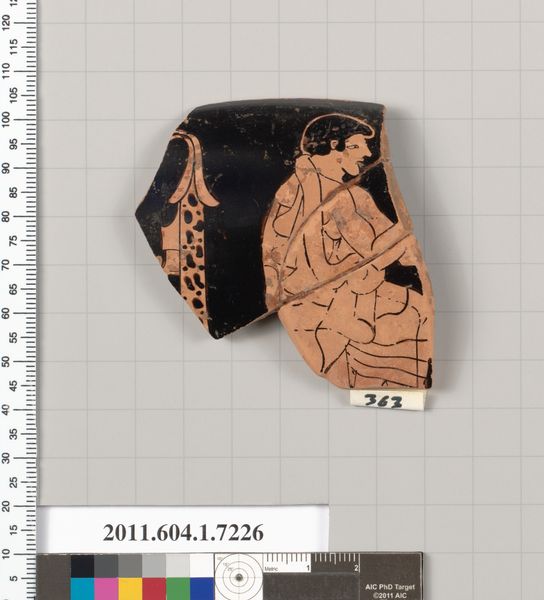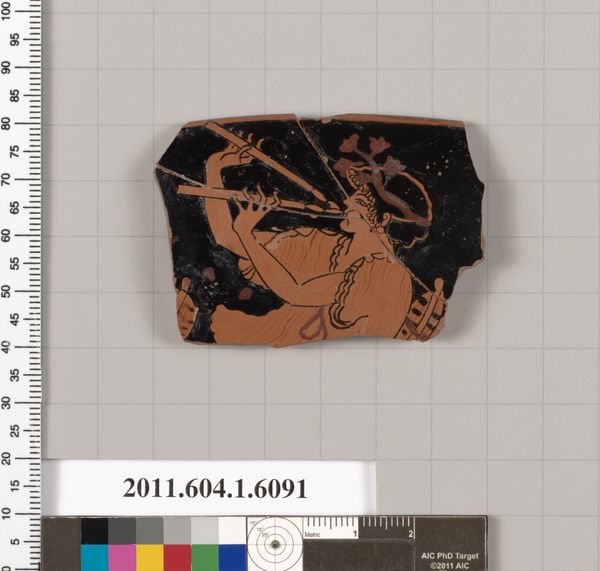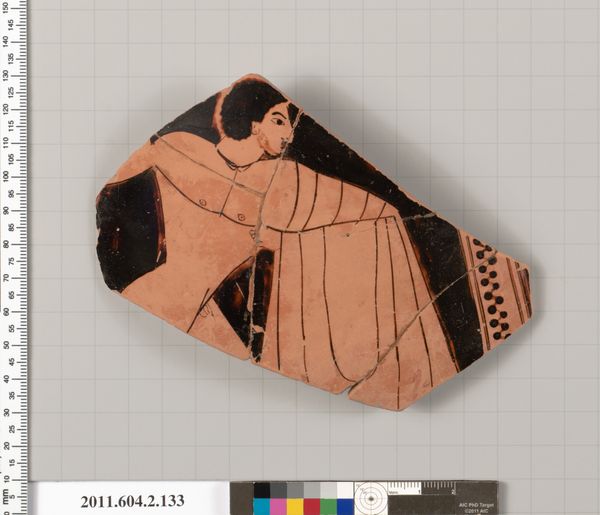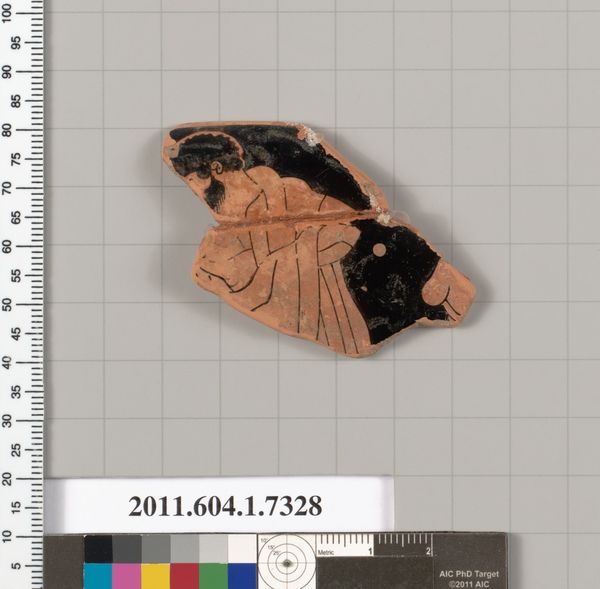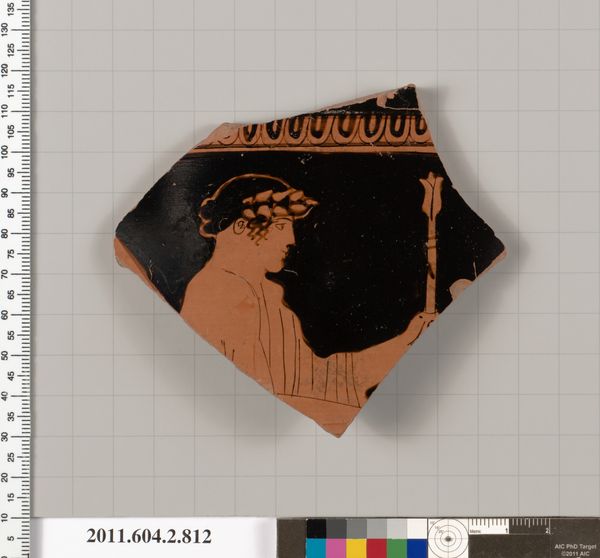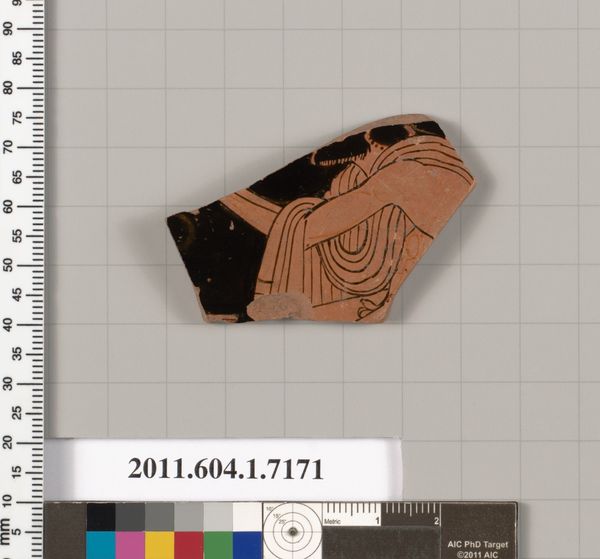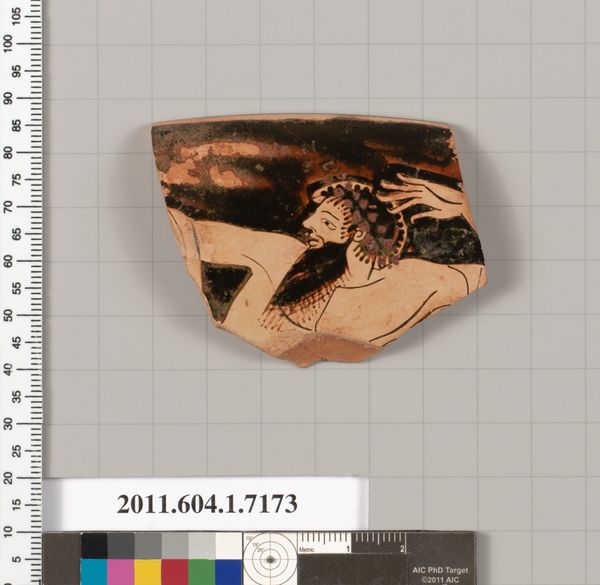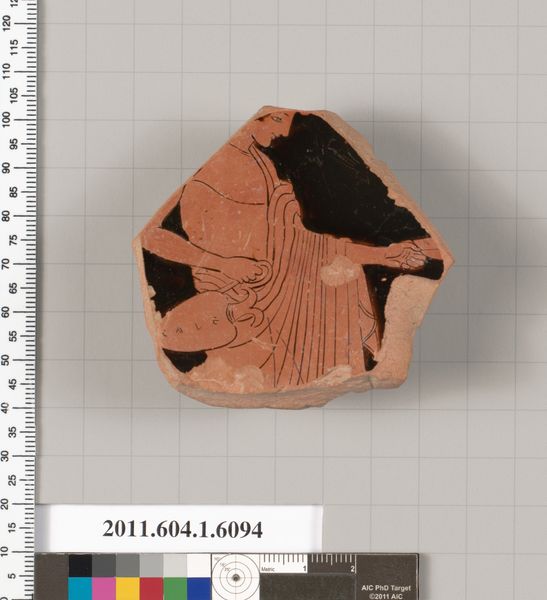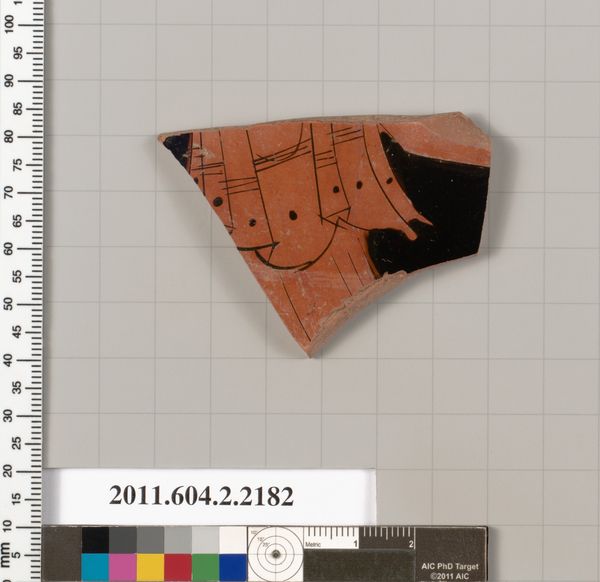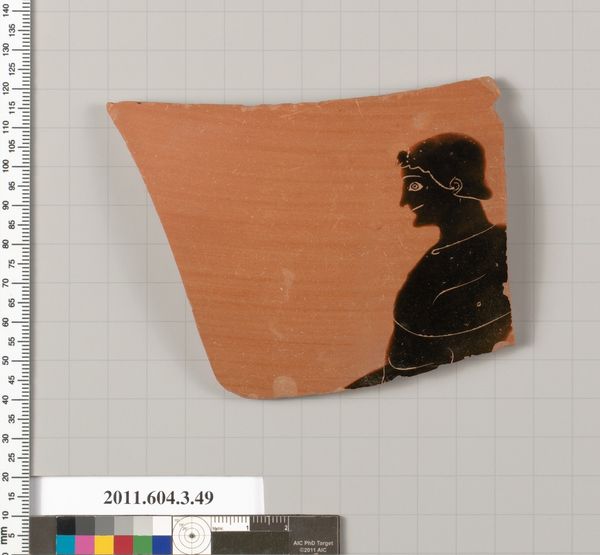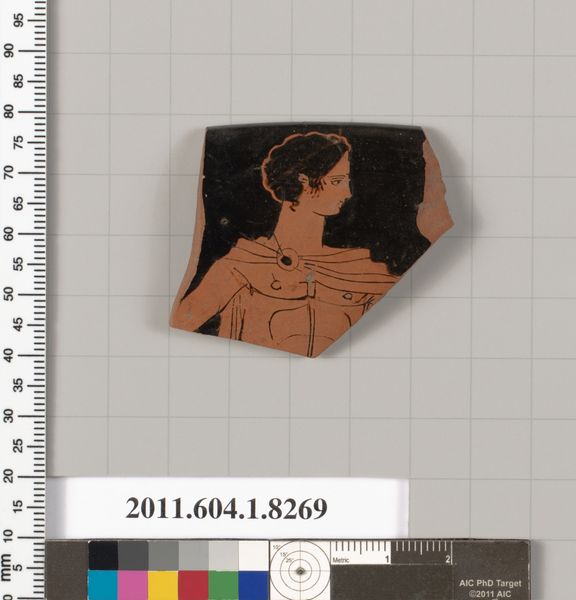
drawing, ceramic
#
portrait
#
drawing
#
greek-and-roman-art
#
ceramic
#
vase
#
figuration
#
roman-art
#
ancient-mediterranean
#
line
Copyright: Public Domain
Curator: Here we have a terracotta rim fragment of a kylix, or drinking cup, crafted around 530 BC and attributed to Hermonax. Editor: The black background and the figures depicted in what looks like red-figure technique immediately gives it a dramatic flair. Despite being a fragment, the expressiveness is captivating. Curator: Absolutely. Kylixes, objects of daily life, also served as canvases for social narratives. Consider the labor invested here—shaping the clay, meticulously painting the figures, controlling the kiln firing process to achieve that glossy black. The red-figure technique, developed around this time, essentially reverses the older black-figure style. The fine lines define the figures. Editor: I'm thinking about its place in Athenian society. A drinking cup used during symposia, social gatherings that reinforced hierarchies and expressed cultural values. What can this specific imagery, incomplete as it is, tell us about the rituals and stories circulating then? Curator: Exactly. We can speculate on the figures themselves—their gestures, what remains of their garments. Were they revelers, athletes, mythological characters? It’s also compelling to ponder what these vessels meant for social interaction and class divisions during this period. Editor: Thinking of that access, did such elaborate ceramic ware ever trickle down to broader Athenian society or was the consumption primarily restricted to the elite? Curator: While mass-produced pottery certainly existed for the everyday citizen, pieces with detailed artistry likely marked a display of affluence and sophistication within particular social circles. And we should never disregard the importance of their context within religious rituals. The drinking parties were commonly religious events and kylixes themselves had votive purposes. Editor: The fact that it is only a fragment complicates any comprehensive conclusion, and yet allows a tantalizing glimpse into the craftsmanship and social structures of its time. Curator: Precisely. This seemingly simple drinking cup opens to a range of critical investigation into material culture and symbolic meaning during that particular historical moment.
Comments
No comments
Be the first to comment and join the conversation on the ultimate creative platform.
